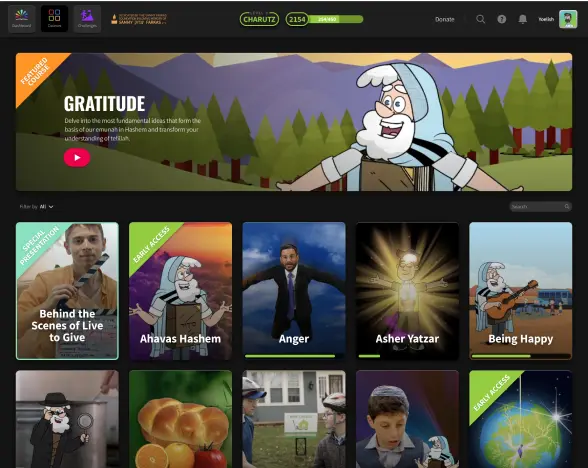
When Teaching Emunah, There Are No Shortcuts!
This blog post is part of a series of tips for teaching Emunah and Tefillah in the classroom. Sign up for our newsletter to get notified when the next tip comes out.
Imagine that teaching about emunah is a construction site. In any construction site, you first need to lay down the foundations, and the higher you build, the stronger the foundations need to be. Similar to a construction site - when teaching about emunah, there are no shortcuts, you need to start bottom-up.
The Lauren & Ezra Kest Emunah & Tefillah Project is structured in a way that the teacher can’t just “press play” and take a back seat in the classroom. There’s a build up before each video and a follow up after each video is viewed. The teacher lays the foundation by setting up the stage so the students have the proper frame of mind when they watch the videos, and the follow up ensures that they have fully understood what was being discussed in each video in the series.
For example, the first video in the series is entitled “Looking for the Truth.” Obviously, you can simply start the lesson by showing the video. However, our instructors guide for this video recommends an introduction that enables you to personalize the topic for the students:
Teacher pulls out cell phone and shows to class. The idea is to show the basic emunah concept that the world had to have a Creator. We all agree that it is ludicrous to say a cell phone randomly came into being. We certainly should agree that this complex universe, that God created, needed a Creator. Teacher should guide the students toward this conclusion.
“What if I were to tell you that this cell phone randomly came into being without any help from any person? It started out as a microscopic molecule of plastic and it evolved, all by itself, over the course of many, many years? Would you believe me? Would you say I was delusional?”
Even before watching the video, the students will have engaged in a deep philosophical conversation on the concept of emunah. After this introduction, it’s a completely different viewing experience for the students.
After viewing the first video, you can introduce a number of “paths” to connect to Hashem (personal, nature, history…) - this way each student will understand that there can be multiple ways for him or her to reach emunah.
This is just a short example of the foundations that will be crucial for the students to understand these concepts before moving forward to the next video in the series.
